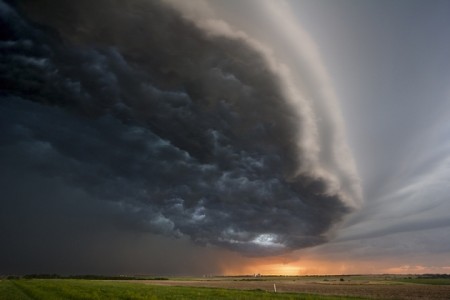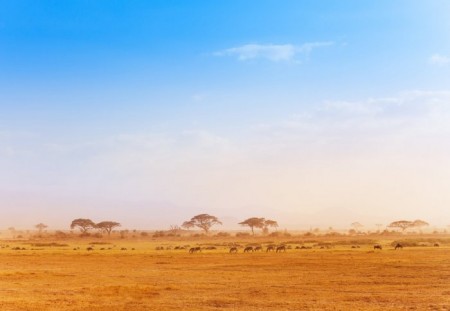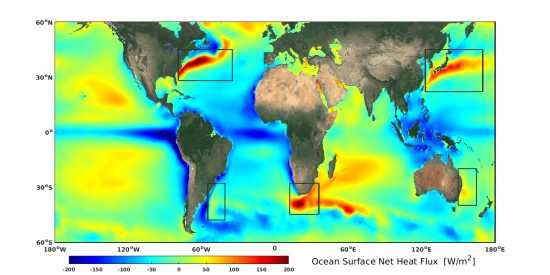July 17, 2016 – The presumptive nominee of the U.S. Republican Party, Donald Trump, is fond of spouting conspiracy theories. Climate change is a Chinese-inspired hoax. President Obama knows something that he’s not sharing when it comes to Muslims, racism, and countless other subjects. His catch phrase, “there’s something going on,” however, can be applied to observable scientific reporting on the state of our planet.
Here are three observable trends that scientists shared with the public in the last week.
Biodiversity Drops Below “Safe” Limits
In the journal Science, a new analysis of 2.38 million records on 39,123 terrestrial species at 18,659 sites across the planet shows that human land use is causing an overall decline in biodiversity exceeding 10%, a number deemed a “safe” boundary. At greatest risk are grassland, savanna and shrub-land biomes, closely followed by forests and woodlands. In the study it indicates that 58% of our terrestrial biome, home to 71% of our human population, has experienced substantial biodiversity loss, enough to impact economic development and future sustainability.
In 2009 scientists first formulated a planetary boundary concept to define the environmental limits in which humans could safely sustain themselves. This definition is being used today to assist in the development of global sustainable policy. Nine proposed boundaries are included and climate change is one of these. The reason for the formulation is simple: to provide a scientific analysis of the risk to humans and by humans in destabilizing Earth’s biological systems.
What are the nine proposed boundaries?
- climate change
- stratospheric ozone depletion
- ocean acidification
- biodiversity loss
- land system changes
- freshwater use
- atmospheric aerosol loading
- geophysical effects
- biological effects
States Professor Andy Purvis, Department of Life Sciences, Imperial and Natural History Museum, United Kingdom, a co-author of the study, “It’s worrying that land use has arleady pushed biodiversity below the level proposed as a safe limit….Decision-makers worry a lot about economic recessions, but an ecological recession could have even worse consequences…until and unless we can bring biodiversity back up, we’re playing ecological roulette.”
Cloud Patterns Changing in Our Atmosphere
There definitely is something going on with clouds over the last three decades reports a new study and global warming appears to be the prime suspect. Clouds have long been the wildcard of the atmosphere. Interpreting atmospheric processes and the role of clouds in contributing to or countering global warming, in this new study appearing in Nature, is giving scientists a much better picture of the cloud-climate relationship.
States, Joel Norris, atmospheric scientist, Scripps Institute, La Jolla, “it’s really the first credible evidence that we have of climate change and clouds in the observed record.”
In studying clouds simulations really don’t work. You need to be looking at observable data. That’s why this latest research on long-term cloud cover from 1983 to the present is so significant. And this is what the study has found:
- clouds are shifting closer to the Earth’s poles
- cloud tops are extending higher into the atmosphere
- fewer clouds over mid-latitudes contributing to expanded dry zones
Climate change simulations appear to have been validated by the observable data and match what is expected to happen from increasing greenhouse gas emissions. The observed data is cold comfort to those who promote theories that clouds act as a counter to overall atmospheric warming.

Ocean Current Research Indicates Poleward Shift
A new study of the world’s ocean currents appearing in the Journal of Geophysical Research: Oceans, raises some interesting observations about what is happening to our planet subject to global warming. There is definitely something going on here state scientists from the Alfred Wegener Institute Helmholtz Centre for Polar and Marine Research. And what is that?
- ocean currents are releasing 20% more heat than 50 years ago
- significant impact on weather is happening on the eastern coasts of South Africa, Asia, Australasia and South America
- Japan, China and Korea can expect rapid warming and more frequent winter storms
- the Gulf Stream in the Atlantic Ocean is moving poleward
- western boundary currents (WBC) similar to the Gulf Stream and found in the southern hemisphere are also moving poleward
Global warming is the suspected root cause because the observable data is consistent across all hemispheres and ocean basins on the planet. In the study’s conclusions it states:
“As the 21st century progresses, we expect the poleward shift in the Northern Hemisphere to become clearer as the response to radiative forcing grows in size relative to the natural variability. In the Southern Hemisphere, changes in intensity and latitude of the WBCs [western boundary currents] will depend on the opposing impacts of ozone recovery, rising greenhouse gas, and the varying influence of natural variability. In all cases, the dynamic changes of the WBCs impact poleward ocean heat transport, regional climate, storm tracks, and ocean ecosystems.”
What are the implications of rapid changes to ocean currents?
- impacts on animals and plants along coastlines leading to forced migrations or extinction
- impacts on ocean habitats and the species living within them
States Hu Yang, one of the principal authors of the study, “In the coastal fishing grounds, the fish won’t be able to survive in their previous living environments. A change of 1 or 2 degrees Celsius will be too much for them.”
















